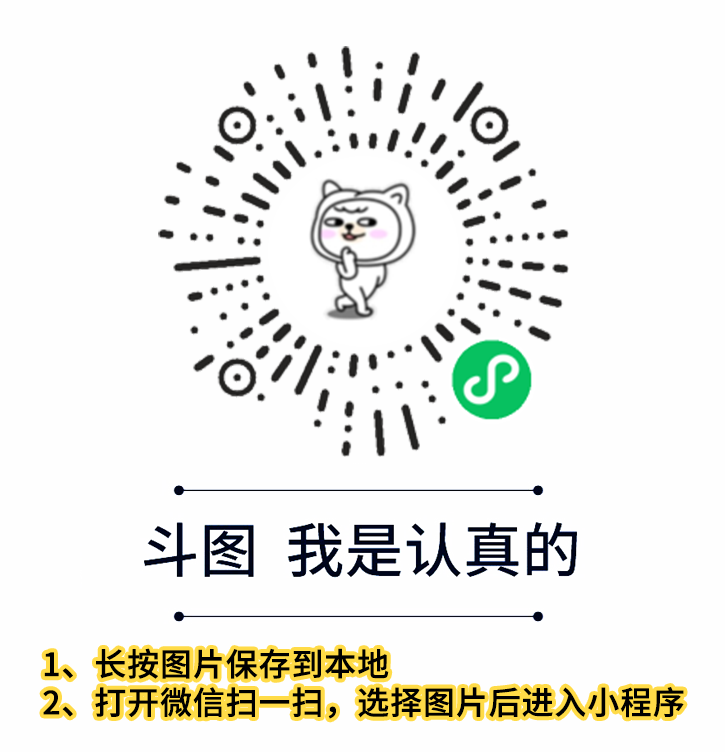
| 方法 | 说明 |
| public static <T> Collector<T,?,Double> averagingDouble(ToDoubleFunction<? super T> mapper) | 它返回一个收集器,该收集器产生应用于输入元素的双值函数的算术平均值。如果不存在任何元素,则结果为0。 |
| public static <T> Collector<T,?,T> reducing(T identity, BinaryOperator<T> op) | 它返回一个收集器,该收集器使用提供的标识在指定的BinaryOperator下执行其输入元素的缩减。 |
| public static <T> Collector<T,?,Optional<T>> reducing(BinaryOperator<T> op) | 它返回一个Collector,该Collector在指定的BinaryOperator下执行其输入元素的缩减。结果描述为Optional <T>。 |
| public static <T,U> Collector<T,?,U> reducing(U identity, Function<? super T,? extends U> mapper, BinaryOperator<U> op) | 它返回一个Collector,该Collector在指定的映射函数和BinaryOperator下执行其输入元素的缩减。这是reduce(Object,BinaryOperator)的概括,它允许在归约之前对元素进行转换。 |
| public static <T,K> Collector<T,?,Map<K,List<T>>> groupingBy(Function<? super T,? extends K> classifier) | 它返回一个收集器,该收集器对T类型的输入元素实施"分组依据"操作,根据分类函数对元素进行分组,并将结果返回到Map中。 |
| public static <T,K,A,D> Collector<T,?,Map<K,D>> groupingBy(Function<? super T,? extends K> classifier, Collector<? Super T,A,D> downstream) | 它返回一个收集器,对类型T的输入元素实施级联的"分组依据"操作,根据分类函数对元素进行分组,然后使用指定的下游收集器对与给定键关联的值执行归约操作。 |
| public static <T,K,D,A,M extends Map<K,D>> Collector<T,?,M> groupingBy(Function<? super T,? extends K> classifier, Supplier
|
它返回一个收集器,对类型T的输入元素实施级联的"分组依据"操作,根据分类函数对元素进行分组,然后使用指定的下游收集器对与给定键关联的值执行归约操作。收集器生成的地图是使用提供的工厂功能创建的。 |
| public static <T,K> Collector<T,?,ConcurrentMap<K,List<T>>> groupingByConcurrent(Function<? super T,? extends K> classifier) | 它返回并发的收集器,该收集器对T类型的输入元素实施"分组依据"操作,并根据分类函数对元素进行分组。 |
| public static <T,K,A,D> Collector<T,?,ConcurrentMap<K,D>> groupingByConcurrent(Function<? super T,? extends K> classifier, Collector<? super T,A,D> downstream) | 它返回并发的收集器,对类型T的输入元素实施级联的"分组依据"操作,根据分类函数对元素进行分组,然后使用指定的下游收集器对与给定键关联的值执行归约操作。 |
| public static <T,K,A,D,M extends ConcurrentMap<K,D>> Collector<T,?,M> groupingByConcurrent(Function<? super T,? extends K> classifier, Supplier
|
它返回并发的收集器,对类型T的输入元素实施级联的"分组依据"操作,根据分类函数对元素进行分组,然后使用指定的下游收集器对与给定键关联的值执行归约操作。收集器生成的ConcurrentMap是使用提供的工厂函数创建的。 |
| public static <T> Collector<T,?,Map<Boolean,List<T>>> partitioningBy(Predicate<? super T> predicate) | 它返回一个收集器,该收集器根据谓词对输入元素进行分区,并将它们组织成Map<Boolean,List <T>>。无法保证返回的Map的类型,可变性,可序列化性或线程安全性。 |
| public static <T,D,A> Collector<T,?,Map<Boolean,D>> partitioningBy(Predicate<? super T> predicate, Collector<? Super T,A,D> downstream) | 它返回一个收集器,该收集器根据谓词对输入元素进行分区,根据另一个收集器对每个分区中的值进行归约,然后将它们组织成Map<Boolean,D>,其值是下游归约的结果。/td> |
| public static <T,K,U> Collector<T,?,Map<K,U>> toMap(Function<? super T,? extends K> keyMapper, Function<? super T,? extends U> valueMapper) | 它返回一个收集器,该收集器将元素累积到Map中,其键和值是将提供的映射函数应用于输入元素的结果。 |
| public static <T,K,U> Collector<T,?,Map<K,U>> toMap(Function<? super T,? extends K> keyMapper, Function<? super T,? extends U> valueMapper, BinaryOperator<U> mergeFunction) | 它返回一个收集器,该收集器将元素累积到Map中,其键和值是将提供的映射函数应用于输入元素的结果。 |
| public static <T,K,U,M extends Map<K,U>> Collector<T,?,M> toMap(Function<? super T,? extends K> keyMapper, Function<? super T,? extends U> valueMapper, BinaryOperator<U> mergeFunction, Supplier
|
它返回一个收集器,该收集器将元素累积到Map中,其键和值是将提供的映射函数应用于输入元素的结果。 |
| public static <T,K,U> Collector<T,?,ConcurrentMap<K,U>> toConcurrentMap(Function<? super T,? extends K> keyMapper, Function<? super T,? extends U> valueMapper) | 它返回一个并发的收集器,该收集器将元素累积到ConcurrentMap中,其键和值是将提供的映射函数应用于输入元素的结果。 |
| public static <T,K,U> Collector<T,?,ConcurrentMap<K,U>> toConcurrentMap(Function<? super T,? extends K> keyMapper, Function<? super T,? extends U> valueMapper, BinaryOperator<U> mergeFunction) | 它返回一个并发的收集器,该收集器将元素累积到ConcurrentMap中,其键和值是将提供的映射函数应用于输入元素的结果。 |
| public static <T,K,U,M extends ConcurrentMap<K,U>> Collector<T,?,M> toConcurrentMap(Function<? super T,? extends K> keyMapper, Function<? super T,? extends U> valueMapper, BinaryOperator<U> mergeFunction, Supplier
|
它返回一个并发的收集器,该收集器将元素累积到ConcurrentMap中,其键和值是将提供的映射函数应用于输入元素的结果。 |
| public static <T> Collector<T,?,IntSummaryStatistics> summarizingInt(ToIntFunction<? super T> mapper) | 它返回一个收集器,该收集器将一个生成int的映射函数应用于每个输入元素,并返回结果值的摘要统计信息。 |
| public static <T> Collector<T,?,LongSummaryStatistics> summarizingLong(ToLongFunction<? super T> mapper) | 它返回一个收集器,该收集器对每个输入元素应用长时间生成的映射函数,并返回结果值的摘要统计信息。 |
| public static <T> Collector<T,?,DoubleSummaryStatistics> summarizingDouble(ToDoubleFunction<? super T> mapper) | 它返回一个收集器,该收集器对每个输入元素应用双重生成的映射函数,并返回结果值的摘要统计信息。 |
import java.util.stream.Collectors; import java.util.List; import java.util.ArrayList; class Product{ int id; String name; float price; public Product(int id, String name, float price) { this.id = id; this.name = name; this.price = price; } } public class CollectorsExample { public static void main(String[] args) { List<Product> productsList = new ArrayList<Product>(); //Adding Products productsList.add(new Product(1,"HP Laptop",25000f)); productsList.add(new Product(2,"Dell Laptop",30000f)); productsList.add(new Product(3,"Lenevo Laptop",28000f)); productsList.add(new Product(4,"Sony Laptop",28000f)); productsList.add(new Product(5,"Apple Laptop",90000f)); List<float> productPriceList = productsList.stream() .map(x->x.price) // fetching price .collect(Collectors.toList()); // collecting as list System.out.println(productPriceList); } }
[25000.0, 30000.0, 28000.0, 28000.0, 90000.0]
import java.util.stream.Collectors;
import java.util.Set;
import java.util.List;
import java.util.ArrayList;
classProduct{
intid;
String name;
floatprice;
public Product(intid, String name, floatprice) {
this.id = id;
this.name = name;
this.price = price;
}
}
publicclass CollectorsExample {
publicstaticvoid main(String[] args) {
List<Product>productsList = new ArrayList<Product>();
//Adding Products
productsList.add(newProduct(1,"HP Laptop",25000f));
productsList.add(newProduct(2,"Dell Laptop",30000f));
productsList.add(newProduct(3,"Lenevo Laptop",28000f));
productsList.add(newProduct(4,"Sony Laptop",28000f));
productsList.add(newProduct(5,"Apple Laptop",90000f));
Set<float>productPriceList =
productsList.stream()
.map(x->x.price) // fetching price
.collect(Collectors.toSet()); // collecting as list
System.out.println(productPriceList);
}
}
[25000.0, 30000.0, 28000.0, 90000.0]
import java.util.stream.Collectors; import java.util.List; import java.util.ArrayList; class Product{ int id; String name; float price; public Product(int id, String name, float price) { this.id = id; this.name = name; this.price = price; } } public class CollectorsExample { public static void main(String[] args) { List<Product> productsList = new ArrayList<Product>(); //Adding Products productsList.add(new Product(1,"HP Laptop",25000f)); productsList.add(new Product(2,"Dell Laptop",30000f)); productsList.add(new Product(3,"Lenevo Laptop",28000f)); productsList.add(new Product(4,"Sony Laptop",28000f)); productsList.add(new Product(5,"Apple Laptop",90000f)); Double sumPrices = productsList.stream() .collect(Collectors.summingDouble(x->x.price)); // collecting as list System.out.println("Sum of prices: "+sumPrices); Integer sumId = productsList.stream().collect(Collectors.summingInt(x->x.id)); System.out.println("Sum of id's: "+sumId); } }
Sum of prices: 201000.0 Sum of id's: 15
import java.util.stream.Collectors; import java.util.List; import java.util.ArrayList; class Product{ int id; String name; float price; public Product(int id, String name, float price) { this.id = id; this.name = name; this.price = price; } } public class CollectorsExample { public static void main(String[] args) { List<Product> productsList = new ArrayList<Product>(); //Adding Products productsList.add(new Product(1,"HP Laptop",25000f)); productsList.add(new Product(2,"Dell Laptop",30000f)); productsList.add(new Product(3,"Lenevo Laptop",28000f)); productsList.add(new Product(4,"Sony Laptop",28000f)); productsList.add(new Product(5,"Apple Laptop",90000f)); Double average = productsList.stream() .collect(Collectors.averagingDouble(p->p.price)); System.out.println("Average price is: "+average); } }
Average price is: 40200.0
import java.util.stream.Collectors; import java.util.List; import java.util.ArrayList; class Product{ intid; String name; floatprice; public Product(intid, String name, floatprice) { this.id = id; this.name = name; this.price = price; } publicint getId() { returnid; } public String getName() { returnname; } publicfloat getPrice() { returnprice; } } publicclass CollectorsExample { publicstaticvoid main(String[] args) { List<Product>productsList = new ArrayList<Product>(); //Adding Products productsList.add(new Product(1,"HP Laptop",25000f)); productsList.add(new Product(2,"Dell Laptop",30000f)); productsList.add(new Product(3,"Lenevo Laptop",28000f)); productsList.add(new Product(4,"Sony Laptop",28000f)); productsList.add(new Product(5,"Apple Laptop",90000f)); long noOfElements = productsList.stream() .collect(Collectors.counting()); System.out.println("Total elements : "+noOfElements); } }
Total elements : 5